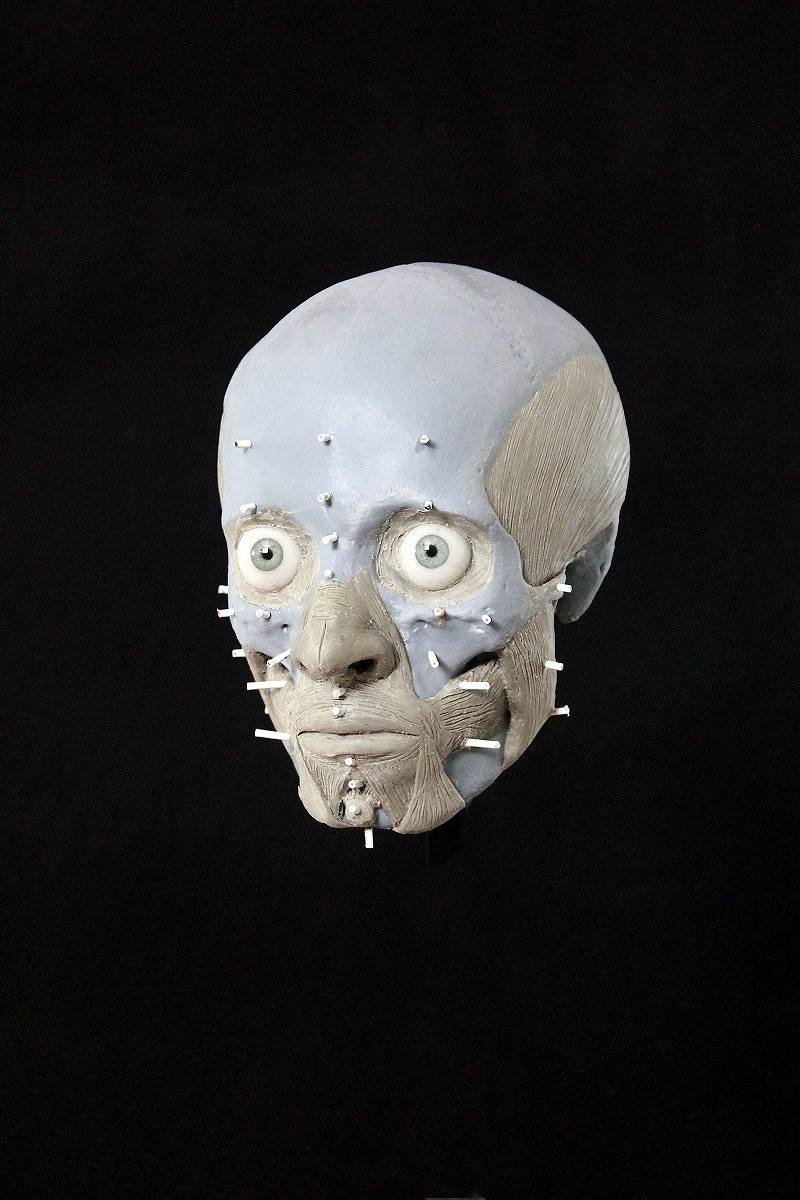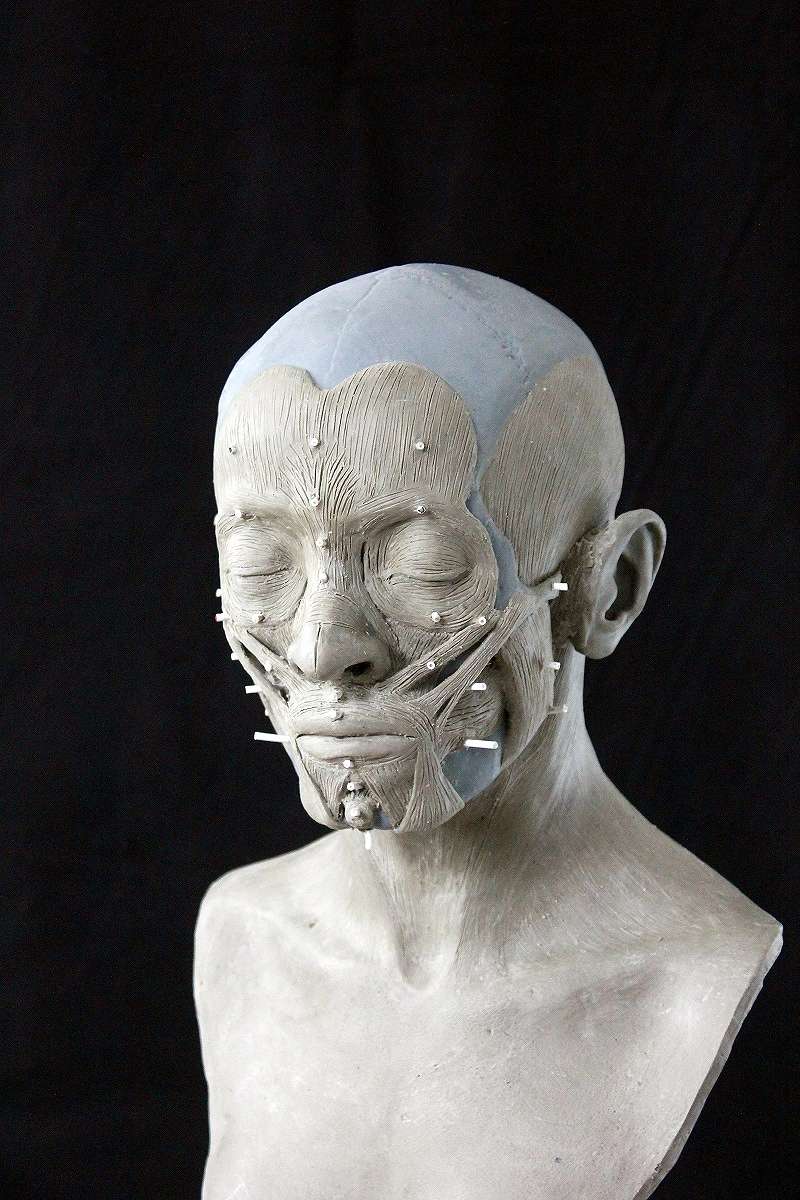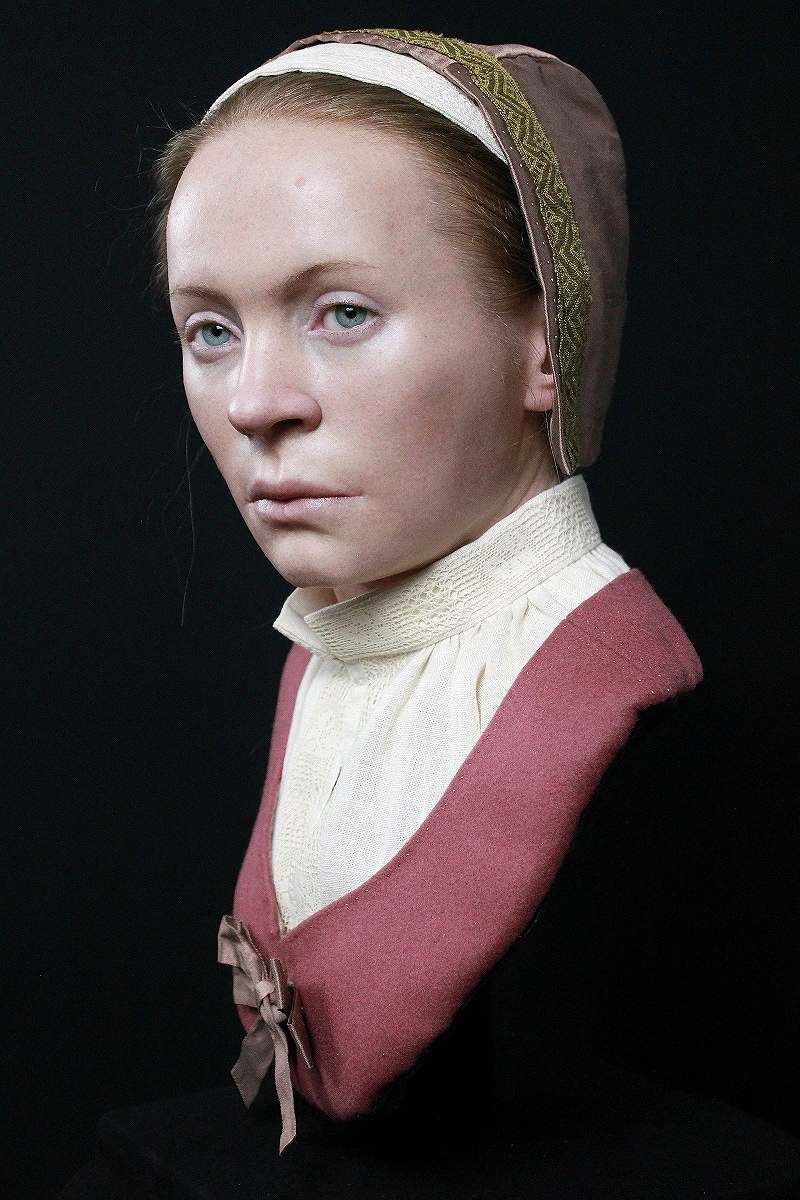
Oscar Nilsson, a Swedish archaeologist and facial reconstruction expert, poses with a 3D facial skeleton in this undated photo.
17:32 JST, November 7, 2024
PIEN, Poland (Reuters) — Buried with a padlock on her foot and an iron sickle across her neck, “Zosia” was never supposed to be able to come back from the dead.
Entombed in an unmarked cemetery in Pien, northern Poland, the young woman was one of dozens feared by her neighbors to have been a “vampire.”
Now, using DNA, 3D printing and modeling clay, a team of scientists has reconstructed Zosia’s 400-year-old face, revealing the human story buried by supernatural beliefs.
“It’s really ironic, in a way,” said Swedish archaeologist Oscar Nilsson. “These people burying her, they did everything they could in order to prevent her from coming back from the dead … we have done everything we can in order to bring her back to life.”
Zosia, as she was named by locals, was found in 2022 by a team of archaeologists from Torun’s Nicolaus Copernicus University.
Aged 18-20 when she died, analysis of Zosia’s skull suggests she suffered from a health condition which would have caused fainting and severe headaches, as well as possible mental health issues, Nilsson said.
The sickle, the padlock and certain types of wood found at the grave site were all believed at the time to hold magical properties protecting against vampires, according to the Nicolaus Copernicus team.

The skeleton of Zosia lies in a grave in Pien, Poland, in August 2022.
Zosia’s was Grave No. 75 at the unmarked cemetery in Pien, outside the northern city of Bydgoszcz. Among the other bodies found at the site was a “vampire” child, buried face down and similarly padlocked at the foot.
Little is known of Zosia’s life, but Nilsson and the Pien team say items she was buried with point to her being from a wealthy — possibly noble — family.
The 17th century Europe she lived in was ravaged by war, something Nilsson suggests created a climate of fear in which belief in supernatural monsters was commonplace.
Nilsson’s recreation began with creating a 3D-printed replica of the skull, before gradually building layers of plasticine clay “muscle by muscle” to form a life-like face.
He uses bone structure combined with information on gender, age, ethnicity and approximate weight to estimate the depth of facial features.
“It’s emotional to watch a face coming back from the dead, especially when you know the story about this young girl,” Nilsson says.
Nilsson said he wanted to bring Zosia back “as a human, and not as this monster that she is buried as.”
-

Oscar Nilsson – Project Pien / Handout via Reuters
A 3D reconstruction of the face of Zosia, a woman buried as a vampire, is seen in this undated photo taken in Stockholm. -

Oscar Nilsson – Project Pien / Handout via Reuters
A 3D reconstruction of the face of Zosia, a woman buried as a vampire, is seen in this undated photo taken in Stockholm. -

Oscar Nilsson – Project Pien / Handout via Reuters
A 3D reconstruction of the face of Zosia, a woman buried as a vampire, is seen in this undated photo taken in Stockholm.
"Science & Nature" POPULAR ARTICLE
-

Genome Study Reveals Milestone in History of Cat Domestication
-

Big Leap in Quest to Get to Bottom of Climate Ice Mystery
-

Japan Set to Participate in EU’s R&D Framework, Aims to Boost Cooperation in Tech, Energy
-

Paws on Parade: Nairobi’s Dogs Dazzle at ‘Pawchella’
-

Japan’s H3 Rocket Failed in Latest Launch, Says Official
JN ACCESS RANKING
-

Tokyo Economic Security Forum to Hold Inaugural Meeting Amid Tense Global Environment
-

Keidanren Chairman Yoshinobu Tsutsui Visits Kashiwazaki-Kariwa Nuclear Power Plant; Inspects New Emergency Safety System
-

Imports of Rare Earths from China Facing Delays, May Be Caused by Deterioration of Japan-China Relations
-

University of Tokyo Professor Discusses Japanese Economic Security in Interview Ahead of Forum
-

Japan Pulls out of Vietnam Nuclear Project, Complicating Hanoi’s Power Plans






















